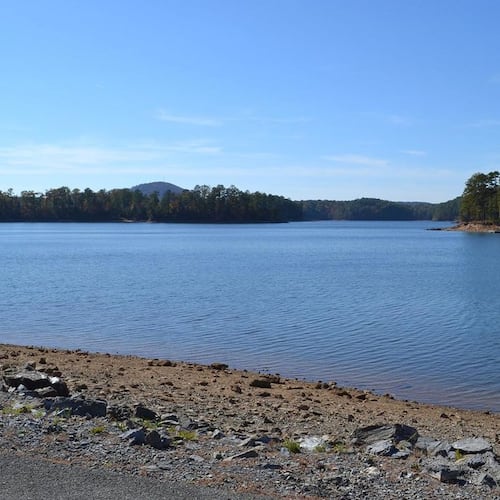Teachers are always on the lookout for programs that will get students actively engaged beyond textbooks and lectures. At Cristo Rey Atlanta Jesuit High School in Midtown, the 135 students in the first-year science classes are making links to biology, chemistry and conservation by raising fish.
But science teacher Joe Barker doesn’t have a typical aquarium where kids can gaze at colorful varieties of aquatic life. Instead, his classroom’s tank is an incubator for trout. In conjunction with the Upper Chattahoochee Chapter of Trout Unlimited, Barker’s students are adding to the area’s trout population by raising the fish from eggs and nurturing them until they’re large enough to be released into the river.
Barker believed the “Trout in the Classroom” program was something that would get his students enthused as their lessons came to life.
“It’s put experience and learning on the map,” said Barker. “We have between 200 and 250 fish eggs that we feed, raise and get acclimated to cold water, all in a safe environment with oxygenated water. Doing that helps explain topics like nitrogen cycle and photosynthesis. In fact, we are now on the chapter about evolution, and they’ve seen what natural selection means. Some of the bigger fish go for the food, and in the last few weeks, we’ve had about a dozen of the smaller ones die off. Those are just a few of the biology lessons students are seeing in real life.”
The lessons also come with considerable responsibility. The tank must be cleaned, refilled with water and stocked with food each day.
“The students are heavily involved in the process,” said Barker. “As the trout get older, it’s get harder. The water needs to be changed more often and treated for the nitrates to get any ammonia out and nutrients in.”
Caring for the creatures from egg to release has been an eye-opener for 14-year-old Jasmine Mitchell.
“At first, I was intrigued by the idea of having a class pet,” she said. “But they’re really a science project. We watched them grow really fast and learned about the food cycle and the food chain. It’s cool that the fish have really connected to what we learn in class and to real life.”
The project’s conservation aspect ties into the mission of Trout Unlimited, a nonprofit dedicated to protecting and restoring north Georgia’s cold-water streams where trout live.
“We rely on this program to sustain the population,” said Jim Byrd, a Roswell resident who coordinates the Trout in the Classroom program for the local chapter that has about 800 avid fly fishing members. “The state stocks a lot of the streams, but if we didn’t assist that effort, the trout would be fished out very quickly.”
Byrd works with Cristo Rey and three other area schools to raise the trout, but finding partners can be problematic. “One of the issues is it’s a little tough to get funding,” he said. “It takes about $1,500 to get a tank, filter, chiller and supplies. And even though about $1,000 is put up by Trout Unlimited, we ask the school to contribute $500, and that can be a barrier for some schools.”
Students participating in the program are excited about it, Byrd said. “They really enjoy that it’s hands-on. They learn about chemistry by testing the water and the balance of ammonia and sulfites. They learn about conservation and the cycle of life. And at Cristo Rey, a city school, I don’t think there are many kids who spend much time in the woods, so we’re teaching the next generation to respect the environment. And maybe a few will become fly fishers when they grow up.”
Information about Cristo Rey: cristoreyatlanta.org. Details about Trout Unlimited: tu.org.
About the Author
The Latest
Featured


